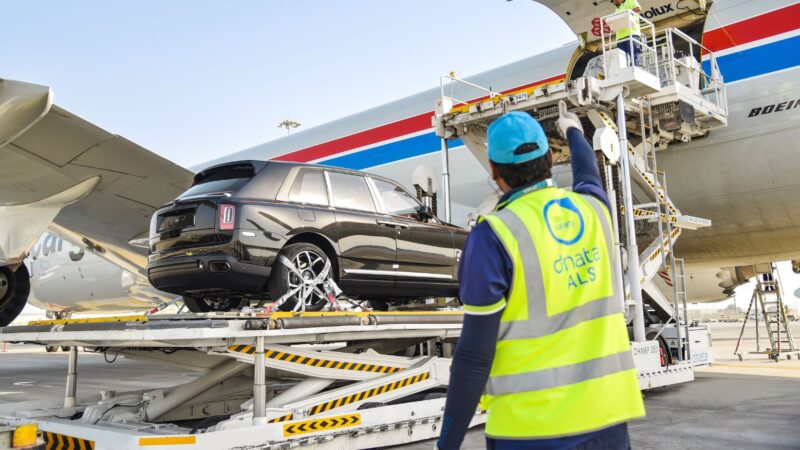After the recent years of turmoil, the air cargo sector is seeking an upward trend. Bernie Baldwin discusses with key players how they expect the year to progress.
Distance is very often a major factor in the effect that one event has on another. Closeness generally has a greater influence than something happening far away – whether physical separation or a passage in time.
After recent years of the global aviation industry being affected by the global COVID pandemic, the growing distance in time means that the pandemic’s effects on the industry are lessening. In the air cargo arena, just as in commercial aviation as a whole, much of the global fleet is back in service and stakeholders are seeking a new phase of growth.
Latest air cargo data
At the time of writing, the latest data issued by the International Air Transport Association (IATA) related to November 2023 global air cargo markets, and suggests that the desire for growth is likely to be realised, with the sector delivering its strongest year-on-year growth for around two years. IATA attributes that result partly to the weakness in November 2022’s figures, but adds that it also reflects a fourth consecutive month of strengthening demand for air cargo.
Those IATA figures for November 2023 show that global demand for air cargo, measured in cargo tonne-kilometres (CTKs), increased by 8.3% compared to November 2022. For international operations, demand growth was 8.1%.
Capacity, measured in available cargo tonne-kilometres (ACTKs), was up 13.7% compared with November 2022 (+11.6% for international operations). “Most of the capacity growth continues to be attributable to the increase in belly capacity as international passenger markets continue their post-COVID recovery,” IATA states. Compared with pre-COVID November 2019 figures, demand is still 2.5% lower while capacity is up 4.1%.
Among the key signs towards success in 2024, IATA indicates the following:
- Both the manufacturing output and new export order Purchasing Managers Indexes (PMIs) – leading indicators of global air cargo demand – continued to hover just below the 50-mark in November with small positive movements indicating a deceleration of the economic slowdown
- Global cross-border trade recorded growth for the third consecutive month in October, reversing its previous downward trend
- Inflation in major advanced economies continued to soften in November as measured by the corresponding Consumer Price Index (CPI), although China exhibited negative annual growth in its CPI for the second time in a row
- Air cargo yields (including surcharges) continued their significant upward trend (+8.9% since October).
Overcoming challenges / identifying growth opportunities
While IATA’s reported figures do suggest that growth is coming, expectations of different players in the market for 2024 are always likely to differ. Guillaume Crozier, dnata’s senior vice president of UAE cargo and global cargo strategy, believes it will be a strong year for the company.
“We do expect dnata will see global year-on-year cargo volume growing by around 5% in 2024, as a positive upside, of course, and one we will prepare for. We also see that trade lanes have shifted,” he says. “We see new countries doing business. We consider that to be an opportunity for growth, because our Dubai hub is being used more and more by airlines for transiting their cargo, which is boosting the volumes for Dubai.”
Crozier continues: “The demographic is evolving here in Dubai, which is another driver for us in terms of consumption goods, and F&B [food and beverage]. Towards the end of 2023, we were also seeing very solid volumes of e-commerce, both arriving into and transiting through Dubai, in time for the festive season. We believe this will continue in 2024. There will still be very high volume volatility in terms of seasonality, but also in terms of trade lanes because, as already noted, they are shifting. New countries are beginning to export more goods than some existing trading nations.”
Crozier confirms that dnata will continue to work to be versatile and agile in terms of cost-effectiveness and throughput efficiency. “I say this because I see more and more requirements for dnata as ground handler, to achieve economies of scale, delivering outstanding service to customers at a very competitive price,” he declares.
At global aircraft charter specialists, Chapman Freeborn, its chief commercial officer, Neil Dursley, also expects the air cargo market to develop positively in 2024, an outcome he anticipates for good reason.
“It’s clear that 2023 was a challenging year for the air cargo market, but despite those challenges, we saw a very good pick-up in the fourth quarter (Q4) of 2023 and we see this continuing into 2024. This has been particularly notable in the e-commerce, oil and gas, automotive, and government and humanitarian sectors,” Dursley reports.
“In our first year post-pandemic, Chapman Freeborn has overcome the challenges the wider industry has seen and expanded dramatically over the past 12 months, and our results are significantly higher than they were pre-pandemic in 2019,” he adds.
With trends for 2024 mostly on the climb among carriers, integrators, and freight forwarders, Dursley confirms that the same is being seen for the company’s air cargo charter solutions. “We’re seeing a high demand for widebody freighter aircraft (for example, Boeing 747F and 777F models), predominantly flying from Asia to Europe and Asia to North America. However, we are seeing a lack of availability of those aircraft types and therefore an increase in pricing for such charters,” he reports.
This article continues after the below picture…

“Freight forwarders are our biggest clients globally, and we’ve seen industry consolidation over the past few years as well as ocean operators entering the air cargo market. We are working on a global basis to support our freight forwarding clients by expanding upon the solutions that we provide – and not just for charter solutions,” Dursley elaborates. “Since 2017, Chapman Freeborn has diversified its portfolio of service offerings, providing capacity management solutions as well as full charters, onboard courier services, livestock movements, and our own controlled capacity with Magma Aviation.”
In assessing the trends across the air cargo sector, dnata’s Crozier believes that stakeholders will remain agile to increase or reduce their capacity depending on the season. “That will create some difficulties in terms of resource management and sizing of our operations from month to month,” he admits.
“Multi-modal transportation is being pushed further, so we see more and more multi-modal logistics solutions being built. The sea–air solution is definitely one of these. But in e-commerce, you have hub and re-distribution centre strategies which are changing and evolving. That creates some new challenges for us, on the ground, in terms of flows and volumes. It’s key to point out that all of us – handlers, carriers, and forwarders – are very much connected and are expecting e-commerce volume to keep driving upwards, but that also increases the expectations. I think this is one of the verticals that we will see in air freight,” Crozier remarks.
He adds: “All stakeholders are targeting to deliver for their B2C customers, focusing on the end-to-end process. We, as a ground handling agent, must gear ourselves up in terms of technology and data capability to be able to work on the e-commerce product at piece level.”
Investing in new technologies
With growth on the horizon, companies need to be prepared to handle the work, as Crozier mentioned earlier. Thus, technologies currently in the process of adoption by the industry can be expected to bring greater efficiencies across the end-to-end operation.
“Airport community systems are certainly being adopted more by the industry,” he observes. “They are an agile system when it comes to architecture and technology, when we need better processing times and better security. Given the increased risk of cyber-security threats, airport community systems are certainly being pushed forward more by many hub airports.
“dnata plans to implement our new-generation Calogi platform and airport community system, which is a scalable solution that we can implement across our network. This enables us to connect with all our stakeholders, covering the handling operation from end to end, driving paperless volumes,” Crozier explains.
“It also helps us to comply with the increasing level of data exchange we need to have between customs or across countries ahead of the export of the shipment, using IATA’s Pre-Loading Advance Cargo Information (PLACI) or Inbound Control System (ICS). The ICS is a principle guiding countries to increase the level of data they are sharing with the consignees, ahead of the shipment being exported.
“This is all important,” he stresses, “because it will be implemented into the airport community system and our data strategy in our OneCargo system, which will then become more and more capable and compliant.
“When it comes to technology, computer vision technology is also something we see becoming a key factor. This includes the upward trend to digitise the acceptance and handling process and give more real-time visibility to the customer, stakeholders, or authorities, of their shipments inbound or outbound. This is what we are currently doing day-in, day-out. We continue to invest in new technologies to provide better efficiency and value for money for our customers,” Crozier comments.
Chapman Freeborn’s Dursley reports that the company takes a very keen interest in data analytics to understand market trends. He says: “We subscribe to multiple industry software products that provide us with data to help us to position ourselves better in the market. We also use software that gives us information regarding aircraft availability on a global scale, and software that enables us and our brokers to very quickly determine the load planning of our customers’ requirements.”
Optimism
Thoughts on the year ahead for an industry sector often fall into the ‘cautious optimism’ category. Given the thoughts of these companies and IATA, though, air cargo in 2024 seems to be firmly in the ‘real optimism’ camp.
READ MORE IN DEPTH FEATURES FROM AVIATION BUSINESS NEWS HERE


